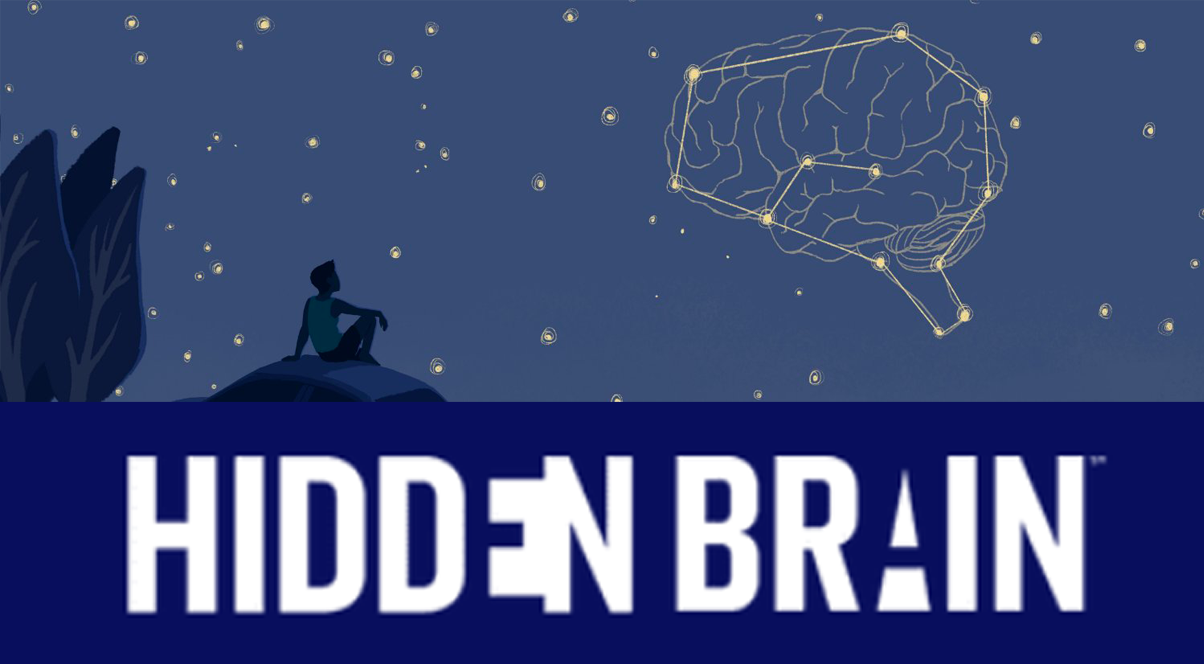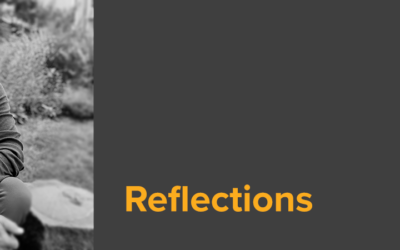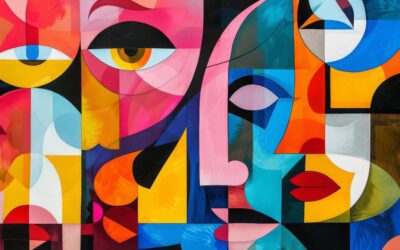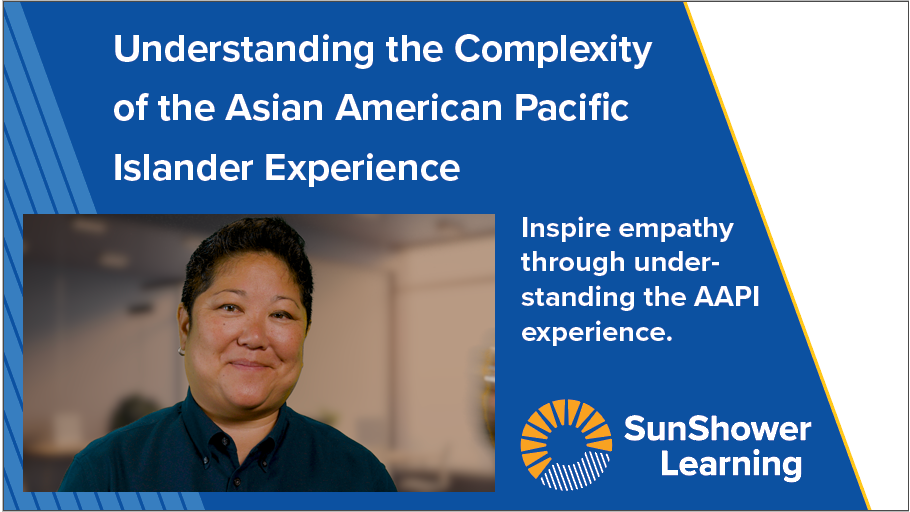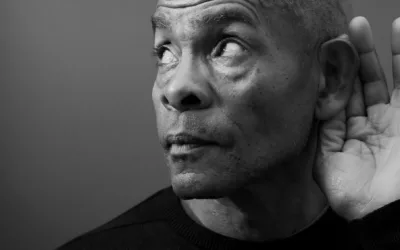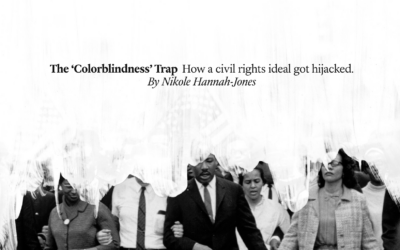Listen to the Hidden Brain: Revealing Your Unconscious podcast and find out
A friend texted me about a podcast he thought I would enjoy. The show notes piqued my interest: “We ask how is it that we can hold negative stereotypes — without being aware of them?”
If you’ve been following our work here at SunShower Learning, you’ll know that this is right up my alley. And so, as I walked Nova into the corner park so he could sniff around and read the “dog news of the day,” I clicked play on Hidden Brain: Revealing Your Unconscious and was immediately captivated. Shankar Vedanta, the podcast host and producer, set the stage by explaining, “One of the most enduring puzzles of the human brain is that when we look inward, we see what feels like a complete picture. We perceive our feelings, remember memories and make plans for the future. Over the last several decades, however, psychologists have shown that significant portions of our minds are in fact hidden from us. They operate outside or below the spotlight of conscious awareness.” He then engaged social scientist Mahzarin Banaji for a more in-depth discussion that depicted the origin of the Implicit Association Test.
A simple exercise reveals the unconscious mind
Vedanta asked Mahzarin Banaji to share how she became a social scientist. Banaji told the story of being curious about implicit memory and how people attached more importance and fame to male names than they did to female names. This led her to conduct other studies about how people misapply filters of gender.
In 1994, Banaji’s Ph.D. advisor, Tony Greenwald, emailed her a simple computer program that asked her to sort a list of insects and flowers using the keys on her computer. Then, she had to classify a list of words as positive or negative and group the insects with the negative words and the flowers with the positive words. Here’s where it got interesting. Greenwald’s program switched things up and asked Banaji to associate insects with the positive words and flowers with the negative words. She noticed this was more difficult.
Vedanta went on to explain, “A few weeks later, Greenwald sent Banaji a list of names traditionally used by Black people and a list of names traditionally used by white people. He asked her to pair white names with positive words and Black names with negative words. Banaji found this as easy to do as pairing flowers with positive words and insects with negative words. Then, Greenwald flipped the groupings. He asked Banaji to pair white names with negative words and Black names with positive words.
Banaji stated, “I’ve already done the insect flower task, so I know that, aha, I see what we’re doing here. But I’m not prepared at all for the pit in my stomach that I’m going to experience when I come to the moment when I have to associate white with bad and Black with good. How shall I say this? I knew what this test was trying to do. I’ve done dozens of these kinds of things before, but there was something about that moment that I say even today it was the single most transformative moment in my life. The test was telling me that my mind could not associate Black with good as easily as it could associate white with good.”
Are we really in control of our associations?
Banaji ‘s voice was rich with emotion as she vulnerably shared, “That is not my view of myself. That is to say, I believe that if I choose to, I can associate anything with good and with bad. It’s up to me to decide what I want to do. This test took away all of that. This test said, ‘You can try to do that, but I’m going to show you you really cannot do certain things as easily as you can do others,’ and, as a psychologist, I knew that that ease meant something more than just ease of doing the test. It meant that my brain had received the thumbprint of the culture so deeply that I had no control over this.”
I was gripped by Banaji ‘s words: “The test was telling me that my mind could not associate Black with good as easily as it could associate white with good.”
The IAT Is born
Now, for some perspective … If you haven’t Googled her already, Mahzarin Banaji is not just a researcher and co-author with Anthony Greenwald on the groundbreaking book, Blindspot: Hidden Biases of Good People, she is the co-developer, also with Greenwald, of the Implicit Association Test, now famously known as the IAT.
In our work with clients, we often recommend that people take one of the many tests that comprise the IAT in order to learn about their own patterns of associations. It is not a test to prove or disprove that you have implicit biases. (Let’s be clear. If you have a human brain, you have implicit biases.) Rather, the IAT is a test that can show how you’ve been influenced and conditioned by all sorts of things – family, education, religion, culture, social media, etc. – to make snap judgments about people and associate them with good or bad, part of your tribe or a different tribe, friend or foe.
What the IAT truly reveals
This societal conditioning is what Part 2 of the Hidden Brain: Revealing Your Unconscious podcast considers. Banaji explained, “Yes, at one level, the tests are telling you about something that is inside your head. But the tests might be telling you something much more important about the culture in which you are living.”
Those words echoed in my head: “the culture in which you are living.” In terms of my work, this concept can also be applied to workplace culture. I’ve thought for a long time that SunShower’s DEI courses are powerful and impactful for the individual and that individuals can shape and change the workplace culture. At the same time, there are many factors that are beyond an individual’s ability to control. For example, systemic biases often show up in the hiring process with job postings that are written in ways that signal the job is for a man rather than a woman or that discourage a person with disabilities (who may be just as qualified) from applying.
Vedanta asked, “What if the IAT test has some measure of importance for the individual and it is actually more accurate as a reflection of what’s in the society and the culture around us?”
The implications for DEI training
Banaji went on to talk about the challenges of training in the workplace to change people and eradicate bias from individual brains. I found this hopeful and what I would call a “both/and” solution. Educating individuals is critical. Banaji suggested that such education must be voluntary so that people are open to the work, but we must also be aware that the bias in individuals comes from society. The bias is part of larger systems that need to be changed.
Banaji looked at the hiring process. “When you then go to [people] and you say, ‘You know what, the way we run interviews is really bad. Interviews are a terrible way to make decisions. We are going to start to do something differently. We are going to get resumes with much harder, good evidence. We’re not going to let people write their hobbies on their resumes. We’re going to do these screenings.’”
This is an example of using two tracks – the individual education about bias and its impact and considering where systems, structures and policies must be re-evaluated and changed. As Banaji explained, “I believe that if that education has been done well, that you will be able to make all these institutional level changes that will ultimately change the level of bias because you will have fixed it by intervening in the right moments. But I don’t say don’t educate them because I do believe that education plays the role of making individuals feel secure as to why we’re going about changing our organization.”
I wholeheartedly recommend spending a dog walk, a drive or a quiet hour on the sofa listening to Hidden Brain: Revealing Your Unconscious (Part 1 and Part 2). I imagine that you will be just as captivated as I was and that you will be spurred to think about the societal forces that are causing us to make associations that are inconsistent with our conscious belief systems. I’d also encourage you to take the Implicit Association Test.
More From Our Blog…
My Mid-September Reflections
A moment of reflectionAs I sat down to write this email, I found myself scrolling through the mailing list and recognizing so many names—people I’ve had conversations with that still stand out. Whether it was about Ouch!, purchasing a license or discussing trends in...
The Great Detachment: Why Employee Engagement is at Risk—Especially for Gen Z
As described in a recent article entitled, “The Great Detachment is looming for employees, experts warn—especially for Gen Z” by Lindsay Dodgson, employee disengagement is becoming an increasingly critical issue for companies worldwide. With a staggering cost of over...
Understanding Employee Responses to DEI Initiatives: Insights and Strategies
A recent study sheds light on a previously underexplored aspect of DEI training. While much focus has been placed on the facilitators, trainers and the content of DEI programs, this study examines how employees actually respond to the training. Published in Harvard...
SHRM’s Removal of “Equity” From DEI Framework: A Step Backwards Amid Growing Backlash
In a stunning step in the wrong direction, the Society for Human Resources Management (SHRM), the world’s largest HR association, has removed “Equity” from its “IE&D” framework. What message does this send, especially amid strong pushback against Diversity, Equity...
Navigating the Shifting Landscape of Diversity, Equity and Inclusion Programs
In the midst of the evolving landscape of corporate diversity initiatives, there's a seismic shift underway. The once-prominent acronym "DEI" - representing diversity, equity and inclusion - is notably absent from many company discussions. As explained in the article...
A Groundbreaking New Course: Understanding the Complexity of the Asian American Pacific Islander Experience
With over two decades of experience in the educational sector, Hideko Akashi, founder and lead consultant at Liberation Consulting, has been a steadfast advocate for diversity, privilege, social justice, inclusion and equity. Now, she's opening a new chapter with the...
The Deafening Silence of DEI Allies: A Call to Action in Troubled Times
As we commemorate the legacy of Rev. Dr. Martin Luther King Jr., his poignant words echo through the corridors of history, reminding us of the profound impact of silence in the face of injustice.” In the end, we will remember not the words of our enemies, but the...
DEI LEAP: Empowering Leaders Through Turbulent Times
DEI LEAP: Empowering Leaders Through Turbulent Times As we all know, 2024 has brought a wave of attacks against DEI. A handful of outspoken critics, such as Elon Musk, are misrepresenting DEI and attacking the strategies and practices that are creating more equitable...
The Colorblindness Trap
Read. This. Article. It's important. The Color Blindness Trap: How a civil rights ideal got hijacked Nikole Hannah-Jones is a domestic correspondent for The New York Times Magazine focusing on racial injustice. Her extensive reporting in both print and radio has...
The Unbearable Lightness of the “I’m Sorry if You Were Offended” Apology
Have you ever come across that non-apology apology? You know, the one that goes, "I’m sorry if you were offended," or its close cousin, "I’m sorry that you…" These non-apologies aren't just weak; they can actually inflict more harm and exacerbate hurt feelings. They...

